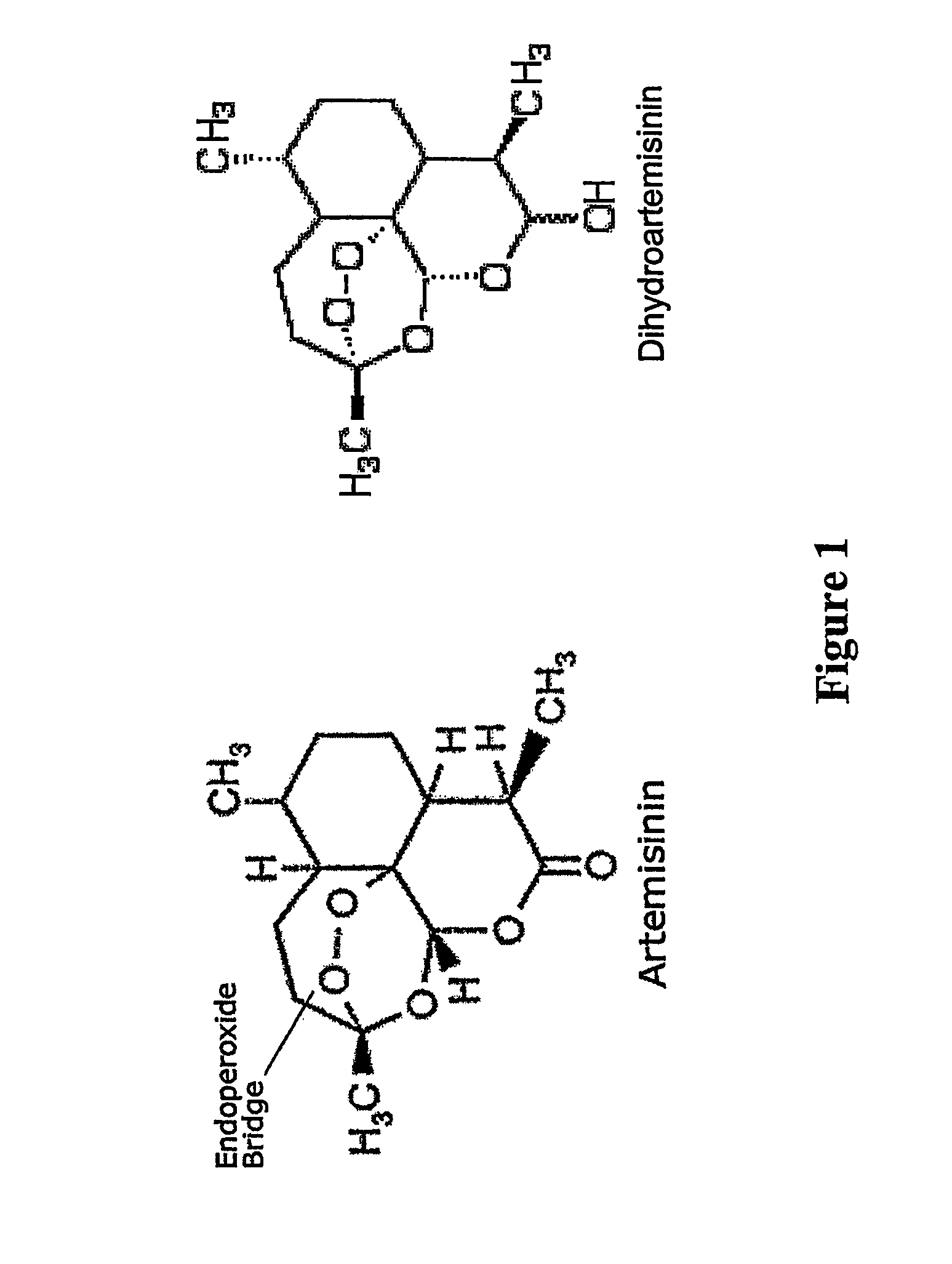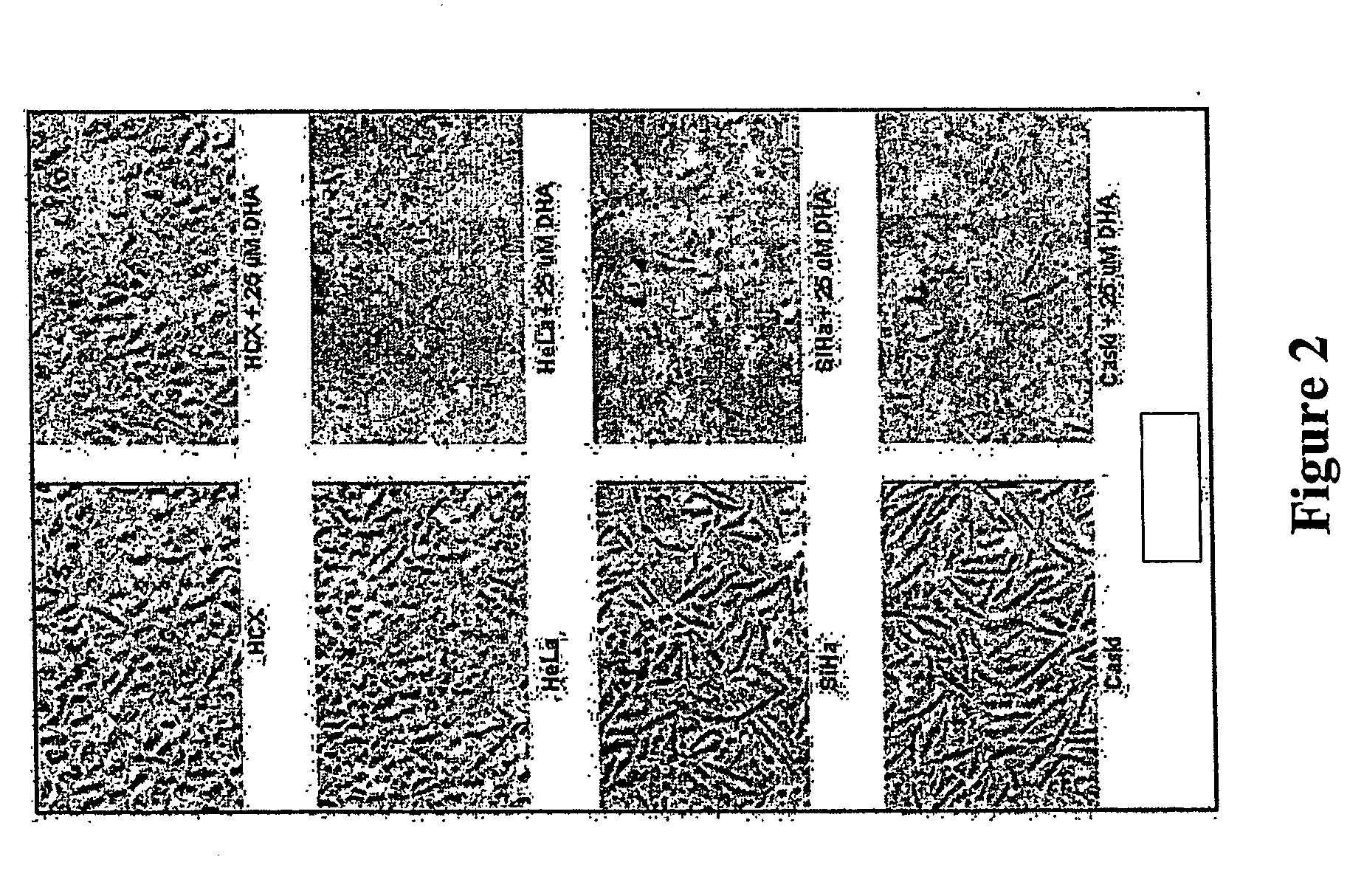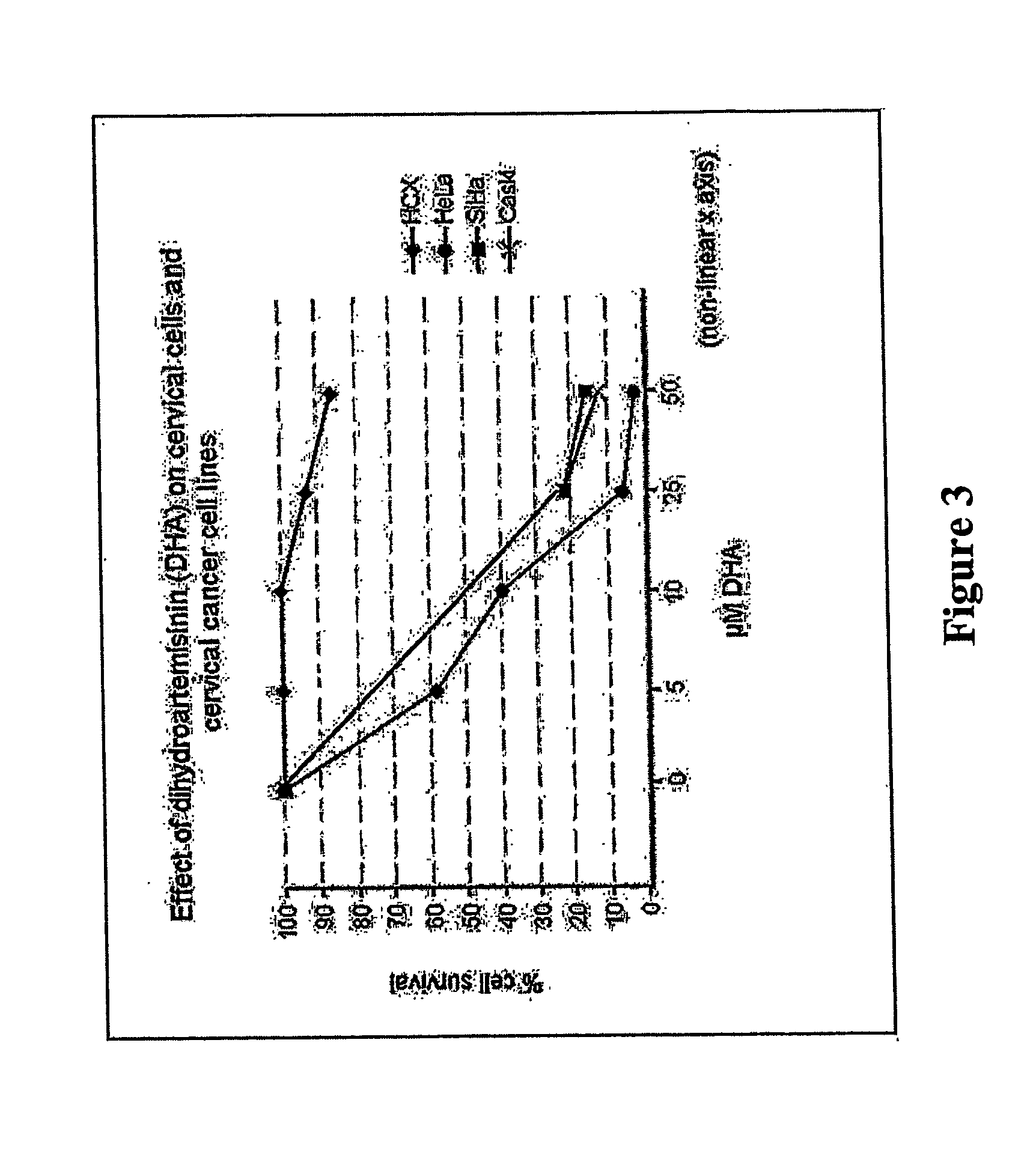Use of artemisinin for treating tumors induced by oncogenic viruses and for treating viral infections
a technology of oncogenic viruses and artemisinin, which is applied in the direction of biocide, organic chemistry, drug compositions, etc., can solve the problems of ineffective treatment, inability to meet the needs of patients, etc., to achieve the effect of enhancing intracellular iron concentration, reducing side effects, and enhancing the effect of artemisinin action
- Summary
- Abstract
- Description
- Claims
- Application Information
AI Technical Summary
Benefits of technology
Problems solved by technology
Method used
Image
Examples
example 1
Effect of Artemisinin and its Analogs on Cervical Cancer Cells
[0075]FIG. 2 shows that artemisinin is lethal for cervical cancer cells. The indicated cervical cancer cell lines were treated with 25 μM artemisinin (or control solvent) for 3 days and then photographed with a phase contrast microscope. Normal cervical cells (HCX) showed little change in morphology in response to artemisinin whereas the cervical cancer cells rounded up and detached from the tissue culture plate.
[0076]FIG. 3 shows that cervical cancer cells, but not normal cervical cells, are efficiently killed by artemisinin. A dose-response curve is shown for the effects of dihydroartemisinin (DHA) on the viability of normal cervical cells (HCX) and 3 cervical cancer cell lines (HeLa, SiHa, Caski). The cervical cancer cell lines demonstrated 80% loss of viability within 3 days of treatment with 25 μM DHA. HeLa cells were the most sensitive, exhibiting 95% cell death at 25 μM DHA.
example 2
Effect of Dihydroartemisinin (DHA) on Virally Transformed Lymphoid Cell Lines
[0077] Applicants carried out studies to evaluate the in vitro effect of artemisinin (DHA) on two virally transformed lymphoid cell lines. One cell line, referred to as MJ, is an HTLV-I positive cutneous T cell leukemia line and the other cell line, referred to Namalwa, is an EBV positive Burkitt's lymphoma B cell line.
[0078] The cell lines were maintained in culture, using RPMI 1640 medium, supplemented with 10% fetal bovine serum and antibiotics. For the assay, 100,000 cells, in volumes of 100 μl medium, were placed in micro-titer wells; an additional 100 μl medium, containing 0 μM, 6.25 μM, 12.5 μM, 25 μM, 50 μM, 100 μM and 200 μM concentrations of DHA, were added. The negative controls contained medium only. The DHA stock (20 mM) was used to dilute the drug in concentrations ranging from 0 to 200 μM. All experiments were performed in triplicate. After incubation at 37° C. and 5% CO2, for various time ...
PUM
| Property | Measurement | Unit |
|---|---|---|
| weight | aaaaa | aaaaa |
| volumes | aaaaa | aaaaa |
| disorder | aaaaa | aaaaa |
Abstract
Description
Claims
Application Information
 Login to View More
Login to View More - R&D
- Intellectual Property
- Life Sciences
- Materials
- Tech Scout
- Unparalleled Data Quality
- Higher Quality Content
- 60% Fewer Hallucinations
Browse by: Latest US Patents, China's latest patents, Technical Efficacy Thesaurus, Application Domain, Technology Topic, Popular Technical Reports.
© 2025 PatSnap. All rights reserved.Legal|Privacy policy|Modern Slavery Act Transparency Statement|Sitemap|About US| Contact US: help@patsnap.com



